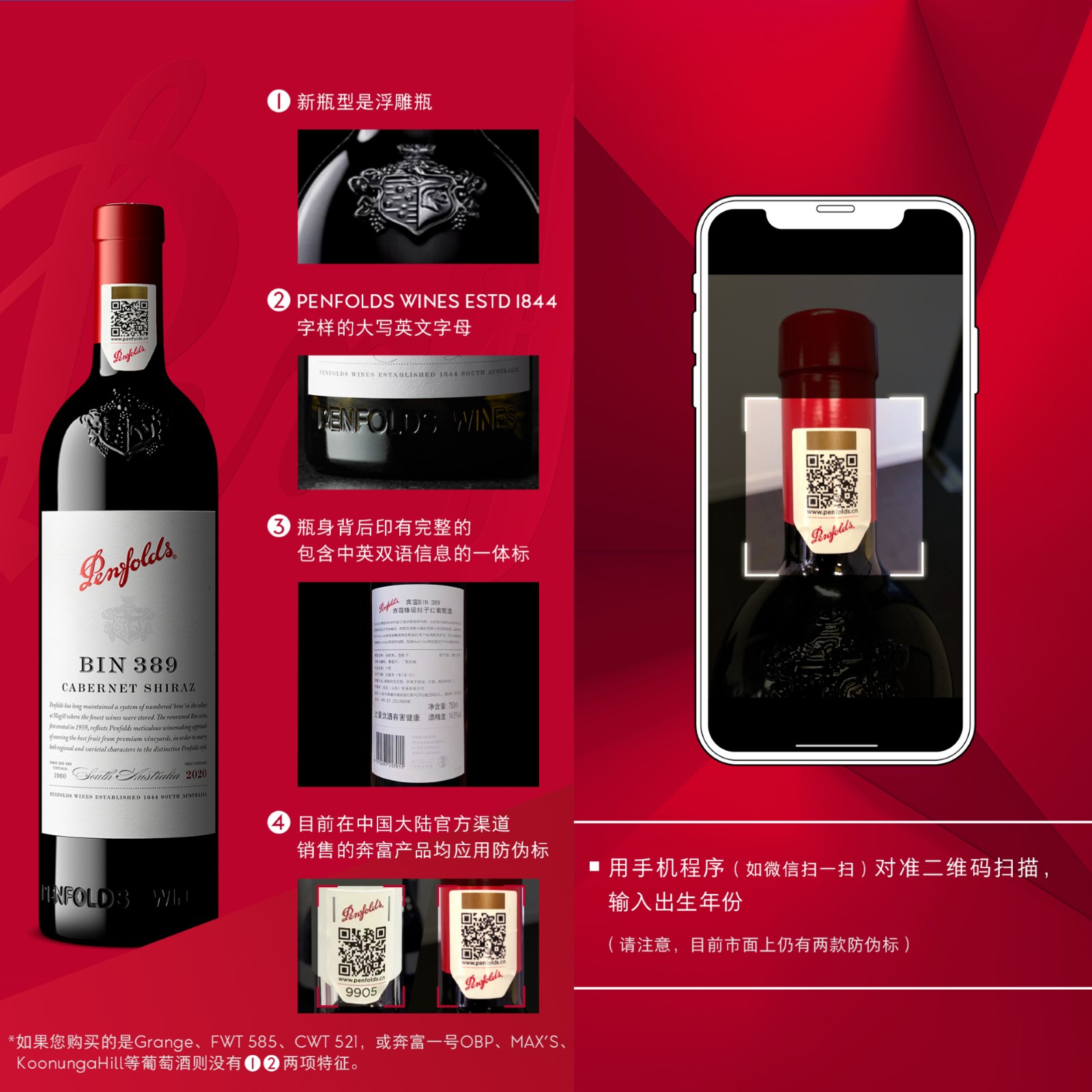We find no shortage of mainstream and trade media articles about the return of Penfolds / TWE / Australia wine to China. What are the early returns on import stats? How willing are consumers to embrace these wines? What is the impact on share prices? And so.
But for a recent Grape Wall newsletter, I simply wanted to give a ground-zero view as seen via the WeChat feed of one consumer based in China: me. Call it a shift from macro to micro.
From advice on spotting fakes to posts about Penfolds parties, here is what popped up the past two weeks.
The Real Deal
One of the biggest concerns is securing authentic Penfolds. And numerous channels in my feed were giving tips on how to tell a real bottle from a fake. Some explanations are quite surgical, including nuances in the Penfolds logo script, markings on the capsules and measuring–down to the millimeter–how far apart some label features should be.
That such videos exist underscores just how many confusing labels are in the market. I posted 35-plus examples here a few years ago and could easily double it with examples collected since then.
(It should be noted that Penfolds is proactive. Its official WeChat account posted tips on identifying real bottles, from embossed images on the bottle shoulder and base to the Chinese / English info on the back label to the anticounterfeiting code on the neck. The post also urged consumers to use authorized dealers, both to avoid fakes and poor transportation / storage, and pointed to online channels such as Jingdong and Tmall as well as retailers like Metro, Walmart, Sam’s Club and Ole.)
The Legend of Ben Austri
Also in my feed: ads both for Penfolds and for wines that make one go, hmmm. In the latter category is none other than Ben Austri, with label fonts, coloring and numbering that seem awfully familiar. In this case, the bin number is replaced with a VIP number. Which one? 407.
Anyway, Ben Austri VIP 407 from Australia promises a “youthful wine full of flavor”, “bright red berries”, “subtle oak notes” and “tannins lingering on the finish.” This Shiraz is priced at RMB768 / USD106 per bottle, but there is a buy three, get three free deal for the Ben Austri fans out there.
I guess the ad algorithm picked me as a potential customer. Unfortunately for Ben Austri, my budget is already dedicated to tea-infused Chardonnay pet-nats.
Penfolds Parties
My feed also included posts from acquaintances attending Penfolds’ recent 180th anniversary parties in Guangzhou, Shanghai and Beijing. One said “Welcome back” while another said “Let’s get rich quickly.”
That’s in reference to Penfolds’ Chinese name, Ben Fu, with Chinese characters that could be translated as “pursue prosperity” or, more tersely, “get rich.’ (In fact, one company famous for mimicking Penfolds was named Rush Rich.)
The photos at top left are from parties in Shanghai, Guangzhou and Beijing, with ballroom layouts, fine dining setups and plenty of Penfolds red as decoration.
Trade Views
There is also plenty of coverage of Penfolds on WeChat wine media accounts appearing on my feed, including from WBO, the Wine Business Observer.
One recent WBO post concerned a court case against Hainan-based brand Benfords Hyland for its “dry red wine” labeled VIP 489 and “Shiraz Cabernet Sauvignon” labeled VIP 128.’
The authorities found nearly 100 bottles on store shelves, confiscated them, and ordered the firm to stop using the Penfolds trademark.
The other concerned expected price increases of Penfolds’ Bin and Icon wines starting in July, with Bin 407 and Bin 389 expected to see the largest price rises in China.
In fact, Penfolds prices are much-discussed online, with numerous videos covering the topic, including what hikes to expect, how prices compare to overseas and whether the wines are worth it. The comment sections for videos in my feed were also active.
After one video on prices, a commenter posted on comparing Bin 389 and Bin 407, stating “Don’t be silly to think that a bigger number is better”, while another was quite blunt: “389 was okay 20 years ago. After that, it went downhill.”
For another video, one commenter stated that producers such as Bass Philip and Rockford are better than Penfolds while a fellow poster noted that many foreigners who regularly drink wine can, even if they know little of the subject, get good labels for less than 10 euros. Yes, wine is pricey in China compared to Europe!
In any case, my WeChat feed is just one anecdote in a huge market. But it is notable how much of the Penfolds content is related to fake wine and to wine prices.
I’ll also soon check out physical retail outlets to see how much pre-COVID Australian / Penfolds wine remains and to what degree newer vintages are stocked. The only such wine I saw during two trips to neighborhood convenience stores this past weekend: three bottles of Penfolds Max 2016 on a discount shelf.
(Get the free Grape Wall newsletter here. Follow on LinkedIn, Instagram, Facebook and Twitter. Grape Wall has no sponsors: help support the mission, including World Marselan Day via PayPal, WeChat or Alipay. Contact Grape Wall at grapewallofchina (at) gmail.com.)
